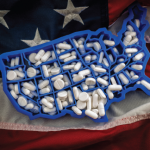The second case revolves around the physician’s legitimate concern about opioid overuse. Did he present a tapering schedule to the patient? Was there an adequate bridge of medicine while the patient transitioned to another provider? Was this physician the first and only prescriber of the opioids? Did the physician discuss the risks, benefits and alternatives of beginning and escalating opioid therapy for a chronic non-cancer indication? These are the questions that will be raised if the physician finds himself defending his actions against an abandonment allegation.

Discussion
Prior to the 1990s, physicians were prohibited from effectively treating chronic non-cancer pain with high-dose opioids. Pain physicians, advocacy groups and, perhaps, the pharmaceutical industry honed in on our undertreatment of pain, resulting in increased attention to pain—and increased opioid sales.
The common belief was that there was no limit on maximum dosage. Pain was considered the fifth vital sign.1 “Smiley faces” and 10-point pain scales became widespread. Most of us prescribed out of an honest intent to treat pain compassionately and prevent suffering. Perhaps the increased concern for nonsteroidal antiinflammatory drug (NSAID) toxicity, which all rheumatologists were aware of, contributed to the rise of opioid use. In 2011, the Institute of Medicine released the report, “Relieving Pain in America,” in which it was estimated that 100,000 adults are affected by chronic pain.2 Retrospectively, it is clear that there was an absence of evidence-based literature addressing safe and effective opioid use.
Then the tide changed. In 2013, the Centers for Disease Control and Prevention (CDC) published a study indicating a strong association between increased opioid sales and overdose deaths. They estimated that more than 60% of overdose deaths are related to pharmaceuticals. Forty percent of deaths relate to doctor shopping and diversion of these drugs.3 In 2009, more people died accidentally of prescription drug overdoses than from motor vehicle accidents. The 100,000 who are estimated to have died from opioid overdoses from 1999–2010 exceeds the number of American deaths in the Vietnam War.4
Of interest, most of the deaths were unintentional and occurred at home. Opioids have a strong effect on non-REM sleep and are particularly risky when used with sleep aids or benzodiazepines.
Finally, according to the National Institute on Drug Abuse, 2% of Americans are addicted to prescription pain medicine.
Special concern has recently been raised around the issue of morphine-equivalent doses (MEDs) >100 mg. Three different studies suggest a markedly increased risk of death when higher MEDs are used.5,6,7 There is a 3.7–4.3% increased risk when using 50–100 mg daily when compared with 20 mg. Of note, there is an MED calculator from Washington State that is available online8.



